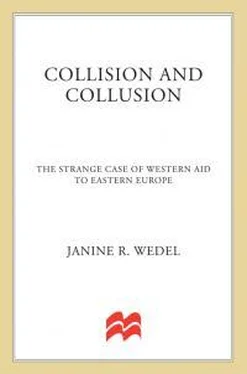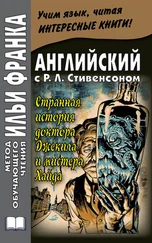It was not only the rapacity of Western agents or the errors of planning and implementation that led to problems in the aid effort. Further complicating the relationships between donors and recipients were the legacies of decades of communist rule. The pervasive distrust of foreigners and officialdom, the powers of the old elites, and the persistence of established relationships and mentalities could not be eliminated as easily as the ubiquitous statues of Lenin. Consequently, the legacies of the Cold War and communism played a large part in the story of aid to Central and Eastern Europe, Russia, and Ukraine. Donors could either help to dismantle communist-style relationships and mentalities or inadvertently support them. In some instances, unwitting donors sustained and even reinforced those legacies through their sheer misunderstanding of them. The Eastern champions of democracy who used aid for their own personal and political purposes, or the government-funded loan officers who preferred to feather their own nests rather than to help fledgling businesses, were among the many who, through their manipulation of aid and aid officials, kept those legacies alive. They, and the tradition they represent, cannot help but be an important focus of this book.
The progression of the aid effort to Central and Eastern Europe, and later to the former Soviet Union, can be traced in terms of three major phases. The initial euphoria on the part of donors and recipients alike was the first phase, which I call “Triumphalism.” This phase was almost inevitably followed by a period of frustration and resentment in both East and West—a phase I call “Disillusionment.” Eventually, in some cases and especially in Central Europe (Poland, Hungary, and the former Czechoslovakia), the donors and recipients adjusted to each other—a phase I term “Adjustment.” They began to examine the relationships between them and how those could best be managed for successful aid outcomes, or at least to suit their own purposes. In other cases, notably that of Russia, there has been little successful adjustment, only scandal and ever-increasing tension. This book follows the tortuous path of aid efforts first in Central Europe, and, when the aid effort moved east, in Russia and Ukraine, in terms of those three phases.
CHEMICAL REACTIONS
“West” and “East” represent different types of social, economic, and political systems and distinct Cold War reference points. What happens when these two types of systems intersect through their representatives over the issue of aid? How do actors, operating in terms of different constraints, interests, procedures, and circumstances of power, interact and respond when brought together under the mantra of assistance?2 (Although “West” and “East” are problematic categories given the vast variations within each, they organize the aid story in that the “West” gives aid and the “East” receives it.)
Foreign aid delivery often is thought of as a “transmission belt”—a conveyor transmitting advice from one side to another. But, in the cases I have studied, aid appears more like a series of chemical reactions that begin with the donor’s policies, but are transformed by the agendas, interests, and interactions of the donor and recipient representatives at each stage of implementation and interface. Each side influences the other, and the result is often qualitatively different from the plan envisioned. This view of aid processes differs from approaches suggesting that “aid delivery” is like transferring knowledge from one society to another. In such approaches, which call to mind the metaphor of physics, one system is transferred to another, as in electrical induction.
By contrast, this study charts how the representatives of each system respond to the differences of the other—and the changes this produces. Because interactions between donors and recipients occur on (and between) several levels and over time, this book is an ethnography across levels and processes. 3 With aid issues as the common thread, I follow the interactions between actors who are shaping political and economic dimensions of relations between nations and “global” processes and those who are shaped by them.4 The interactions I track are not only between actors on the ground (donor and recipient representatives), but also between the larger systems they represent.
I set out to understand aid processes rather than to cover the majority of aid projects (which would be impossible). To this end, I attempt to sample processes that appear to account for aid outcomes and report my analyses of some representative projects. The interactions associated with each phase of the East-West encounter occasion “chemical reactions” that can lead to the next phase. The three phases of aid—Triumphalism, Disillusionment, Adjustment—signify palpable benchmarks along the way.
To tell the story, I outline the donors’ major approaches in terms of the relationships engendered in the interface between donors and recipients. Because each approach nicely corresponds to a topical area (privatization, democratization, economic reform, or business development), chapters 2 through 5 present case studies, each of which links an approach with one such topical area. Chapter 2 examines the role of technical assistance, a chief strategy of the donors, in fostering a leading donor priority—the privatization of Central European state-owned enterprises. Another significant scheme has been giving grants to chosen recipient groups to further the building of democracy and civil society (chapter 3) and as political aid to a specific group under the guise of economic aid (chapter 4). Finally, providing monies for local business development has often coincided with loans to businesspeople in the recipient countries (chapter 5).
The study builds on the many works in development anthropology that have highlighted how cultural, social, and political conditions of recipient societies influence the success (or lack thereof) of aid programs. I concentrate especially on the ways in which donors organize aid efforts and the effects these have on relationships among people and institutions and, ultimately, aid results.5 I found that while relationships of aid are little studied, they have crucial consequences for development outcomes.
A critical, yet often overlooked, component of the puzzle is recipients’ responses to aid and how these shape the implementation of aid policies. Although recipients often are viewed as passive and voiceless, their responses, agendas, and interests influence aid administration, implementation, and outcomes.6 Recipients can, actively or passively, frustrate, encourage, subvert, facilitate, or otherwise alter aid programs as they are conceived by the donors.
Here knowledge about the organization of Central and Eastern European social relations informs the study of aid processes. Anthropologists have shown how informal economic and social relationships under socialism transformed formal economic and bureaucratic procedures.7 Many of these informal relationships, noted for their resilience, not only survived “transition,” but shaped how recipients used aid and also how they interacted with donor representatives.
In some cases, donors were attracted to this environment of working through personal networks and enlisting the support of close-knit circles of people who had long worked together. The Central and Eastern European aid milieu of personal ties often contrasted starkly with the formalism and bureaucratic procedures of Western donors. Plugging into such a ready-made operation facilitated a donor’s job in that contacts were easily accessible. Two effects of this approach, however, were that it tended to discourage the development of new contacts (as witnessed in chapters 3 and 4) and could enmesh donor agents in “corrupt” practices on the host side (as illustrated in chapter 4).
Читать дальше












